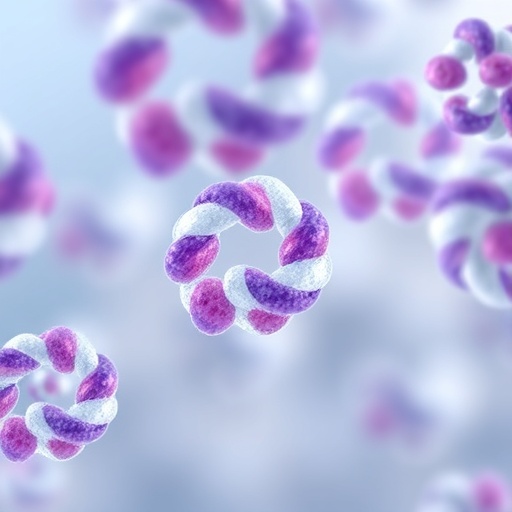Researchers from the Yong Loo Lin School of Medicine at the National University of Singapore (NUS Medicine) have delivered a groundbreaking review on the therapeutic potential of BH3 mimetics, a novel class of small-molecule drugs that are revolutionizing treatment paradigms for acute myeloid leukaemia (AML). AML, characterized by the rapid proliferation of malignant myeloid cells in bone marrow and blood, represents one of the most aggressive and treatment-resistant hematologic malignancies. This comprehensive analysis not only elucidates the molecular mechanisms underpinning the efficacy of BH3 mimetics but also charts promising avenues for overcoming resistance and enhancing patient outcomes.
The core challenge in AML therapy lies in the cancer cells’ capacity to evade programmed cell death, or apoptosis, a process that is tightly regulated by a family of proteins known as BCL-2. In normal physiology, BCL-2 family proteins orchestrate the intrinsic apoptotic pathway, balancing pro-apoptotic and anti-apoptotic signals to maintain cellular homeostasis. Leukemic cells subvert this system by overexpressing pro-survival BCL-2 proteins, thereby evading chemotherapy-induced apoptosis and perpetuating malignancy. BH3 mimetics act by simulating the BH3 domain—a critical pro-apoptotic motif—enabling these compounds to selectively inhibit anti-apoptotic BCL-2 family proteins and restore apoptosis in malignant cells.
Among BH3 mimetics, venetoclax has emerged as the most clinically successful agent. This selective BCL-2 inhibitor has demonstrated remarkable efficacy in clinical trials, especially when combined with hypomethylating agents or low-dose cytarabine. These combinations have been shown to significantly enhance remission rates and prolong survival in AML patients, particularly in older individuals or those unfit for intensive chemotherapy—a patient population historically lacking viable therapeutic options. The US Food and Drug Administration (FDA) has accordingly approved these regimens, marking a pivotal advancement in AML management.
Assistant Professor Alan Prem Kumar, a leading voice in pharmacology at NUS Medicine, co-led the review alongside Assistant Professor Courtney DiNardo from the University of Texas MD Anderson Cancer Center. Reflecting on the clinical impact, Asst Prof Kumar emphasizes that venetoclax has “transformed the treatment landscape” by providing first-time access to effective therapy for frail AML patients. This breakthrough represents a paradigm shift away from the traditional, often intolerable chemotherapy regimens towards more targeted, tolerable interventions.
The review, published in Nature Reviews Clinical Oncology, synthesizes findings from over a thousand peer-reviewed articles, with a detailed focus on 236 rigorously selected studies. This exhaustive assessment maps the molecular underpinnings of BH3 mimetic function, elucidates mechanisms of drug resistance, evaluates clinical outcomes, and explores technological advances such as BH3 profiling and mitochondrial profiling. These profiling techniques allow for precise identification of the apoptotic dependencies of individual AML cells, enabling clinicians to predict drug sensitivity and tailor therapies accordingly.
Crucially, BH3 mimetics have demonstrated the ability not only to target proliferating leukemic cells but also to eradicate quiescent, non-dividing populations harboring complex genetic aberrations. This capability is significant as these dormant cells often contribute to relapse and disease persistence. However, while venetoclax heralds an era of improved outcomes, resistance remains a formidable obstacle. AML cells frequently adapt by shifting survival reliance to alternate anti-apoptotic proteins such as MCL-1 or BCL-xL, or by acquiring mutations in adverse prognostic genes including TP53, KRAS, and FLT3.
Donavan Jia Jie Tan, a first-year medical student and study co-author, underscores this therapeutic challenge, noting that cancer cells’ adaptability forces continuous innovation in treatment strategies. By integrating multiple targeted agents, combination regimens, or advanced drug delivery technologies that concurrently disrupt diverse anti-apoptotic pathways, researchers hope to mitigate resistance and enhance the durability of remissions.
This personalized treatment approach is further bolstered by the advent of BH3 and mitochondrial profiling, which Dr Lam Hiu Yan highlights as powerful tools for aligning therapeutic strategy with tumour biology. These methods facilitate the identification of patients most likely to benefit from venetoclax versus those who may require alternative BH3 mimetics targeting MCL-1 or BCL-xL, thus refining clinical decision-making and minimizing unwarranted toxicity.
Looking ahead, Asst Prof Kumar posits that the future of AML therapy hinges on the precision personalization of treatment regimens. Moving beyond a one-size-fits-all paradigm, tailoring interventions to the molecular and cellular characteristics of each patient’s leukemia will optimize efficacy and improve quality of life. This bespoke therapeutic model signals a shift towards more intelligent, biology-driven oncology care.
Independent expert Professor Chng Wee Joo of NUS Medicine, unaffiliated with the study, affirms the transformative impact of venetoclax-based therapies, especially in older adults and medically complex patients. He highlights the dramatic improvements in remission and survival that would have been unimaginable merely a decade ago. Prof Chng identifies next steps in research aimed at enhancing treatment precision, broadening accessibility, and ultimately converting AML from a once invariably fatal disease to a manageable chronic condition.
Current clinical trials are actively examining venetoclax in combination with groundbreaking agents including FLT3 inhibitors and CD47-targeting antibodies, expanding the scope of effective treatment to a wider cohort of AML patients. Parallel development pipelines are pursuing BH3 mimetics directed against MCL-1 and BCL-xL, leveraging advances in medicinal chemistry and structural biology to create novel inhibitors with improved selectivity and potency.
Taken together, this landmark review from NUS Medicine not only encapsulates the profound clinical advances ushered in by BH3 mimetics in AML but also delineates critical scientific and therapeutic challenges ahead. Through multi-disciplinary collaboration and continued innovation, researchers are poised to extend the benefits of these promising agents, paving the way for a new era where acute myeloid leukaemia becomes a disease defined not by its lethality but by the hope of durable remission and long-term survival.
Subject of Research: Acute Myeloid Leukaemia treatment using BH3 mimetics
Article Title: Apoptosis-targeting BH3 mimetics: transforming treatment for patients with acute myeloid leukaemia
News Publication Date: 1-Sep-2025
Web References: https://www.nature.com/articles/s41571-025-01068-0
References: DOI 10.1038/s41571-025-01068-0
Image Credits: NUS Medicine
Keywords: Leukemia, Cancer, Myeloid leukemia, Oncology, Tumor regression, Tumor growth, Cancer risk, Blood cancer, Cell apoptosis




